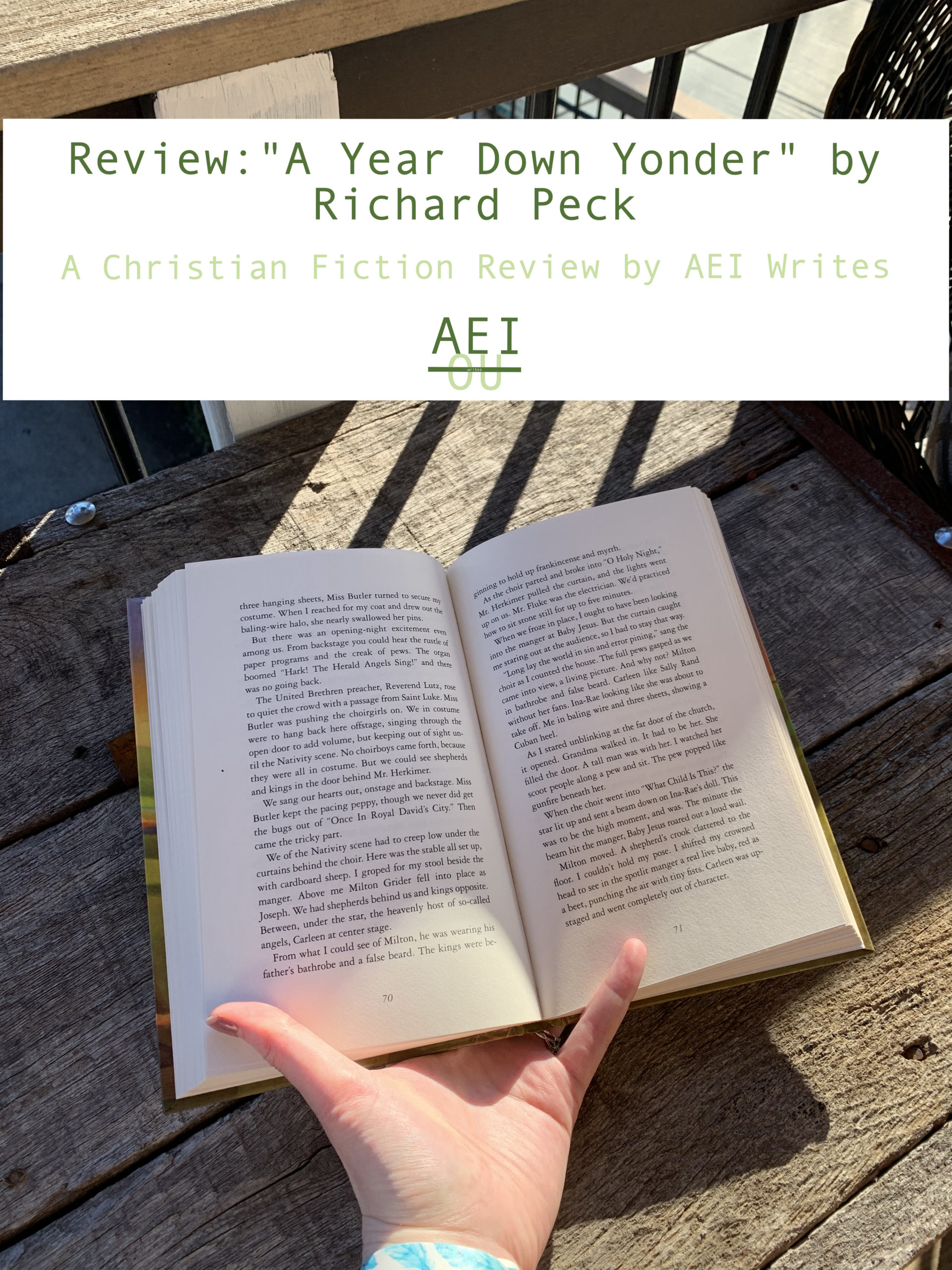I can’t tell you how many time my family and I have read this book. Somewhere around second grade, my mom tried to read the book out loud to my brother and me. I say “tried” because we all wound up laughing so hard we couldn’t even make it to the punch line! I laughed just as hard reading the book to myself. Needless to say, in researching middle grade books for writing inspiration, I had to reread A Year Down Yonder by Richard Peck.
Humor in Trials
A Year Down Yonder always encouraged me to persevere and find humor in the little things. This week, the book rings especially true. A Year Down Yonder occurs during the Great Depression. Peck addresses the scarcity, creativity, and generosity that came with living in the period. (Grandma’s no slouch at making do with what she has, even if that means taking some produce from a neighbor’s field. Yet, she always uses it to take care of her less fortunate neighbors.) Peck also delves into the aftermath of World War I during the Veteran’s Day chapter. The war may have ended, but Peck shows how the soldiers’ and families’ lives forever changed because of horrific war tactics. Further, while I didn’t understand at seven years old, Peck gracefully addresses teenage pregnancy in the Christmas chapter. As an adult, I realized the difficult choice the young mom had to make for her child. In other chapters of the book, Peck addresses complex family relationships and turns snooty pedigree on its head.
While Grandma’s outrageous tactics made me laugh out loud (I mean, a woman ran through town wearing nothing but a snake…) they all addressed deeper issues. The conflict shows the townspeople’s (and therefore our) common humanity. We learn compassion for those who think or look different from us. Grandma illuminates the hidden struggles everyone faces.
Faith in A Year Down Yonder

Faith isn’t expressly addressed in A Year Down Yonder, but the school does present the manger scene in the local church for Christmas. Peck uses religion to illuminate history rather than to preach at his readership. Consequently, I love how faith and story blend together. In fact, we learn more about Jesus’ generous compassion, active love, and discerning discipline from Grandma than we do from the church. We see Jesus’ teachings put in action by Grandma (albeit imperfectly.) It’s seamless and realistic. I think that’s why we all wind up loving the eccentric Grandma Dowdel so much by the end of the book.

